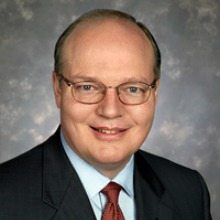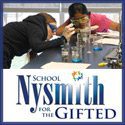
The upcoming STEM series will run throughout September and spotlight local government and private sector executives and their insights about the shortage in STEM workers/local pipeline gap. We’ll publish the stories periodically throughout “SeptSTEMber” in Q&A or feature format.
The greater Washington area employs the largest percentage of STEM workers (18.8 percent in Maryland and 16.5 in Virginia, according to a U.S. Census report), suggesting the area depends heavily on STEM competence for its continued sustainability. And while industry and government execs are eager to hire STEM graduates, the number of U.S. high school seniors who are both proficient and interested in STEM lies at a meager 16 percent.
WashingtonExec recently interviewed Ed Swallow, WashingtonExec STEM Council chairman and founder of Pegasus Strategic Advisors.
WashingtonExec: When did you become interested in STEM issues?
Ed Swallow: I first became interested in STEM issues in 5th grade and wanted to become a science teacher. I had a great science teacher, Mr Russo, that year and he really made science fun, interesting and exciting. As things evolved, the need for scholarships took me to Air Force ROTC, so my carer focus changed. I stayed engaged with STEM at a low level until 2004, when I was asked to chair the Director of Defense Research and Engineering (DDR&E) Summer Study on Critical Workforce Issues In The Defense Industrial Base. That is when I really started to understand the policy issues at the national level and became engaged.
In 2008 I then formed the National Defense Industrial Associations STEM Workforce Division to get more companies engaged. I still chair the Division, and we are holding quarterly meetings around the country starting STEM Learning Networks wherever ther rare interested NDIA chapters.
WashingtonExec: What do you see as the underlying root of this problem?
Ed Swallow: The root cause of the problem can be debated, but some of the more clear cause/effect challenges were an unintended consequence of No Child Left Behind. While NCLB was laudable in what it was trying to achieve, it had the unfortunate side effect of de-emphasizing science and testing our children on what they knew and could recite, not what they could do with what they know.
The biggest challenge in fixing the problem is summed up in one fact: all the work over the last 10 years to increase diversity and the size of the STEM literate population has not changed the composition or size of the eligible pipeline.
WashingtonExec: How and where should policymakers be focusing their resources and efforts to augment the pipeline and address the underlying problem?
Ed Swallow: The biggest challenge in fixing the problem is summed up in one fact: all the work over the last 10 years to increase diversity and the size of the STEM literate population has not changed the composition or size of the eligible pipeline. Our nation’s STEM initiatives do a great job of taking children who are interested in STEM and keeping them excited, attracted and engaged. We are missing the under-represented populations, especially women, people of color and native americas, because these programs are starting with students who are too late in the learning cycle. We have to get them excited, interested and attracted by 3rd or 4th grade, so they do better in middle school and then are on track for both college track as well as career track STEM jobs.
WashingtonExec: What challenges do you see currently impeding the path to implementing that solution and making STEM reform a priority in the U.S.?
Ed Swallow: The biggest challenge is that programs later in the students life are more likely to influence their career and employment choices, so industry and government are more likely to make “signature” commitments to programs that will feed their pipeline. WOrkign with K-5 students has very little if any direct bearing on immediate corporate needs and thus is very hard to make the value proposition work. That is where we need industry and government to take a longer view — that having a more science and math literate society will be good for all employers in the long run, including themselves. A portion of each STEM initiative at any level should include a small “kicker” for k-5 feeder programs, maybe at 10-15% of the total, focused on the under-represented populations, so we do a better job of building the pipeline at the source.
WashingtonExec: Why do you care?
Ed Swallow: I care deeply about this because of the job opportunities that opened up for me because i was excited and attracted to math and science. So many of my classmates in high school ended up with far less opportunity and economic reward just because they didn’t find that spark that I did. I also see how much innovation and technology make a difference in our society and we need to foster that and get more people engaged.
Click here to read the second interview in WashingtonExec’s SeptSTEMber series with Gene Zapfel of Unisys Federal Systems.


